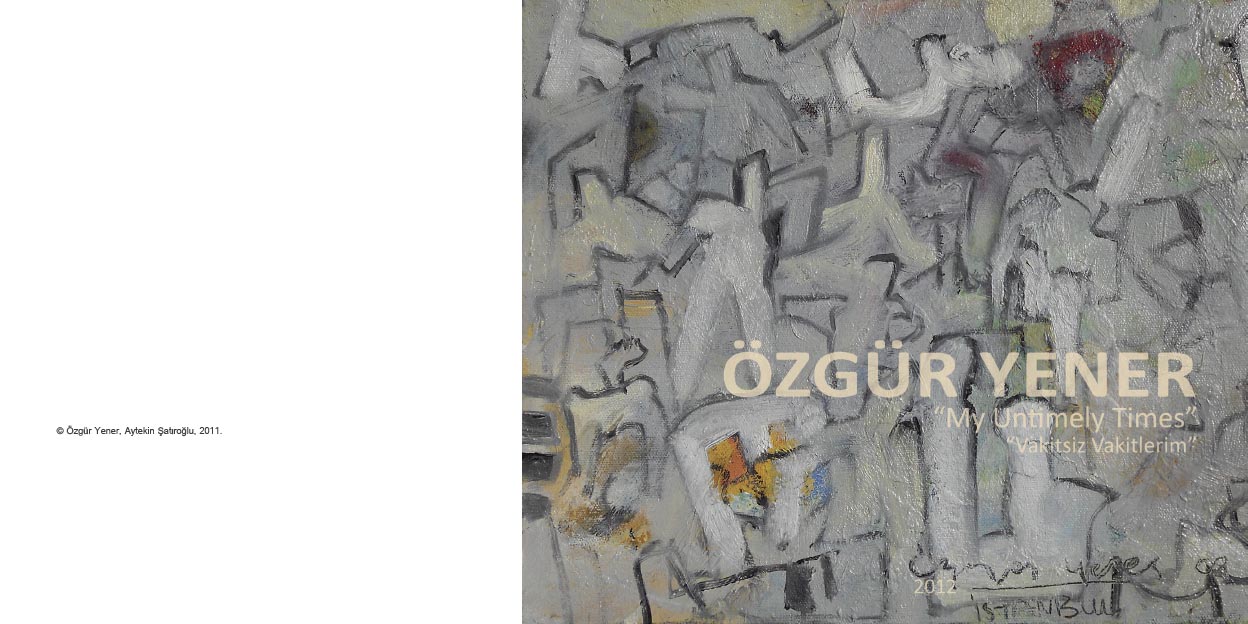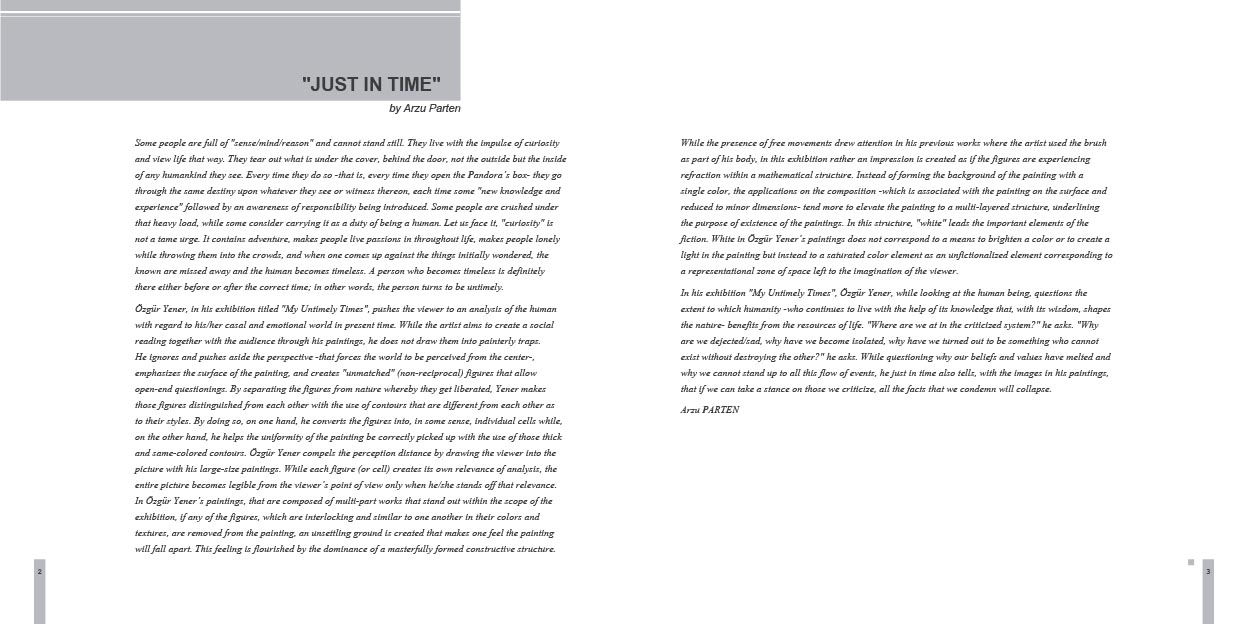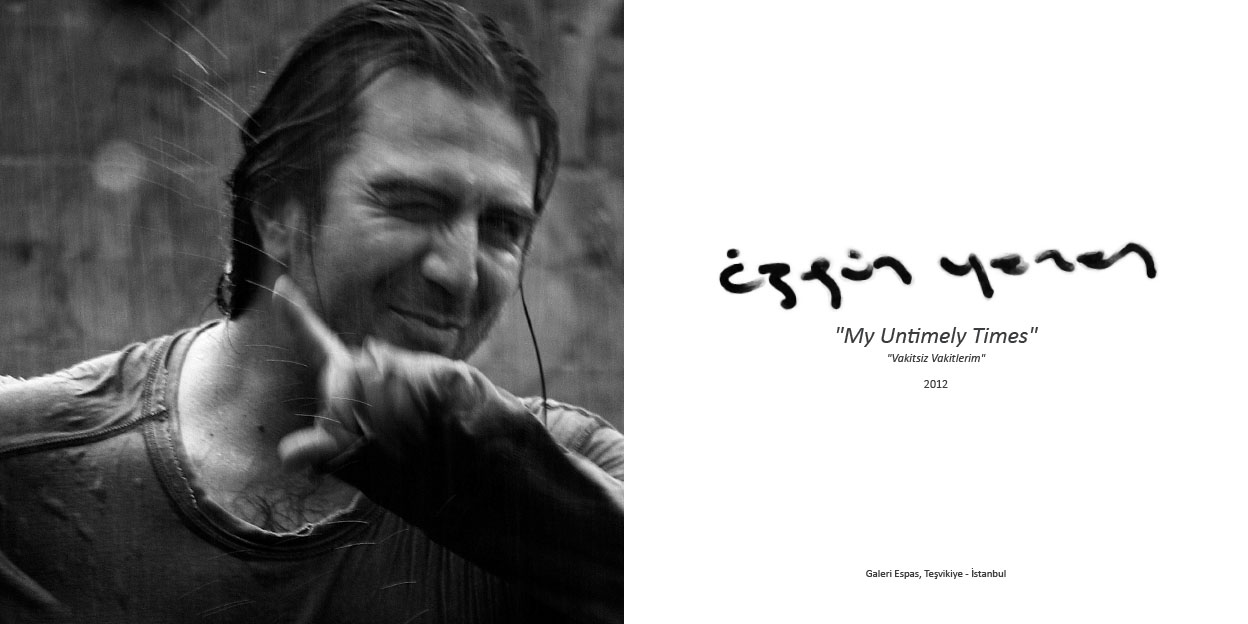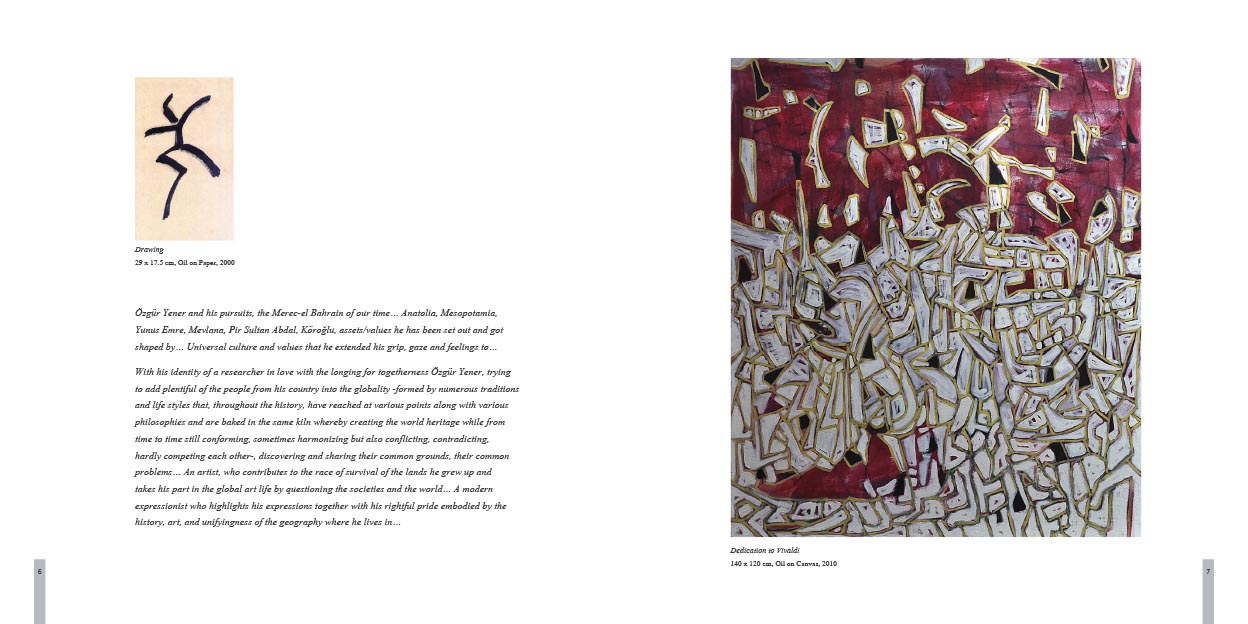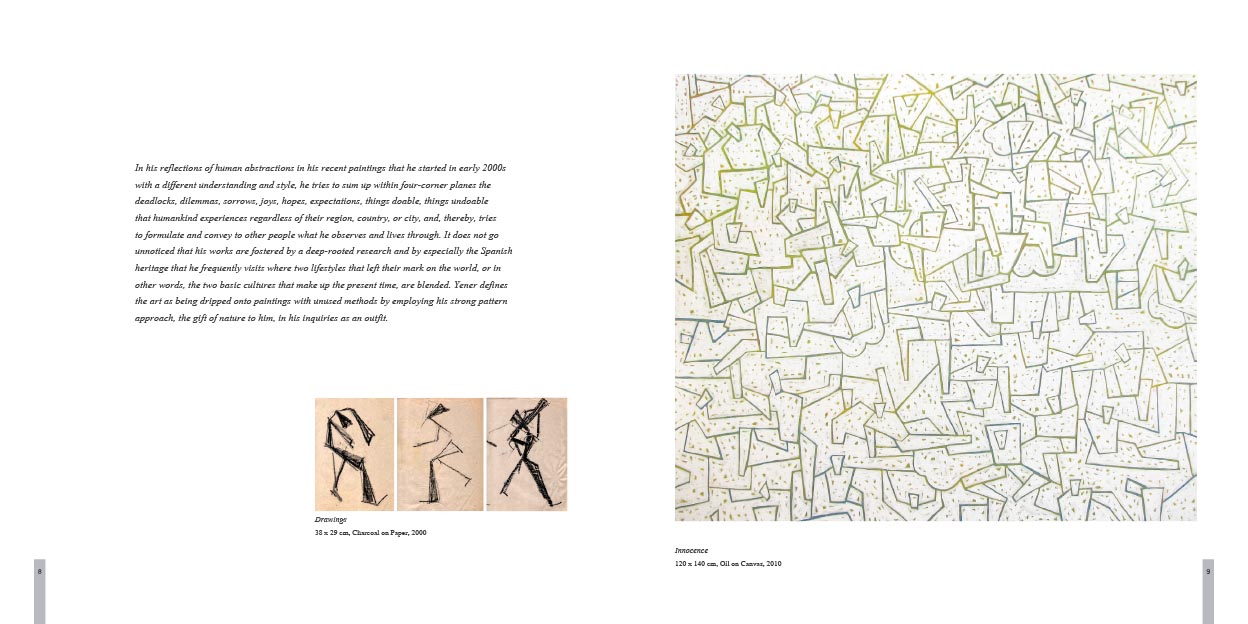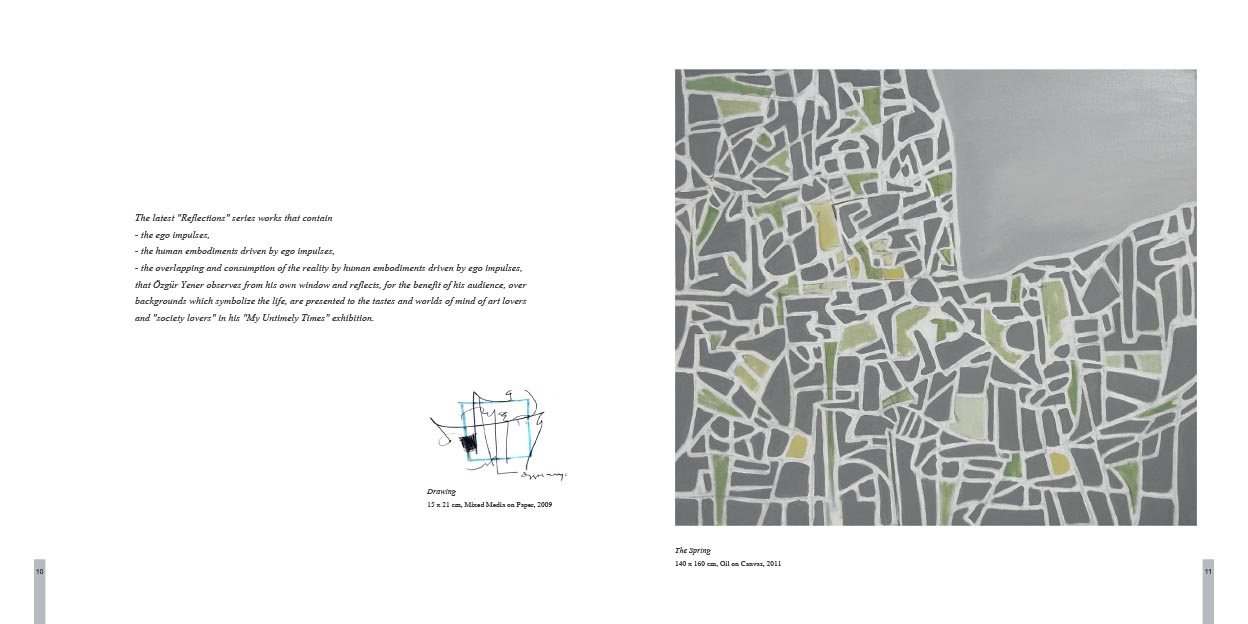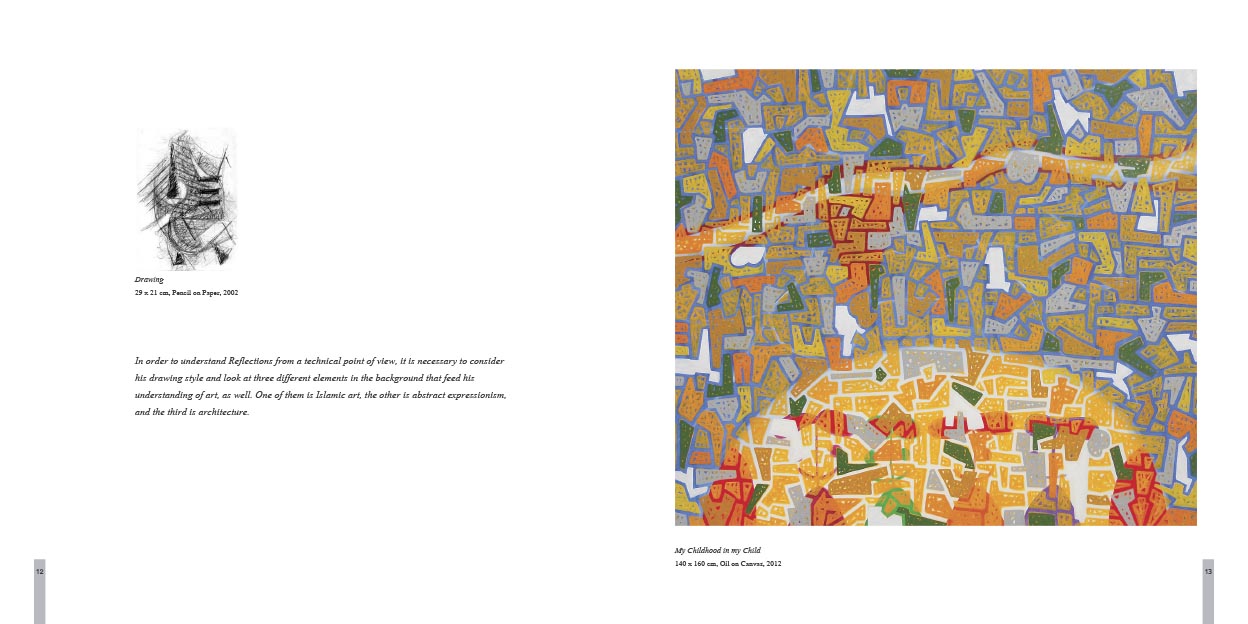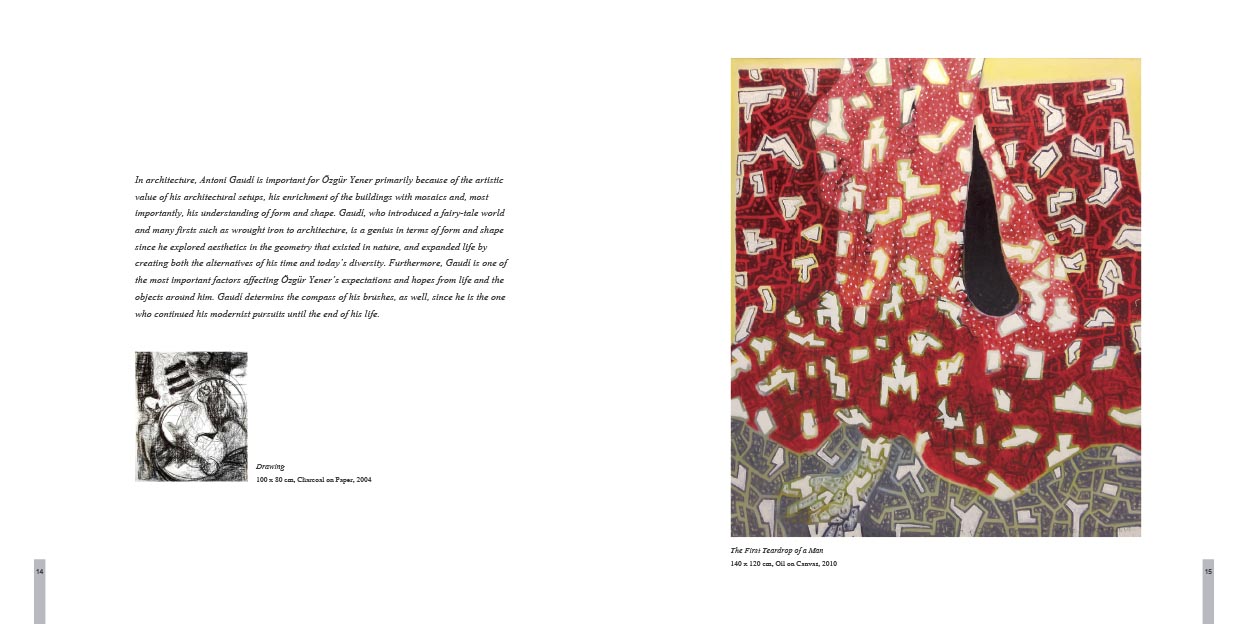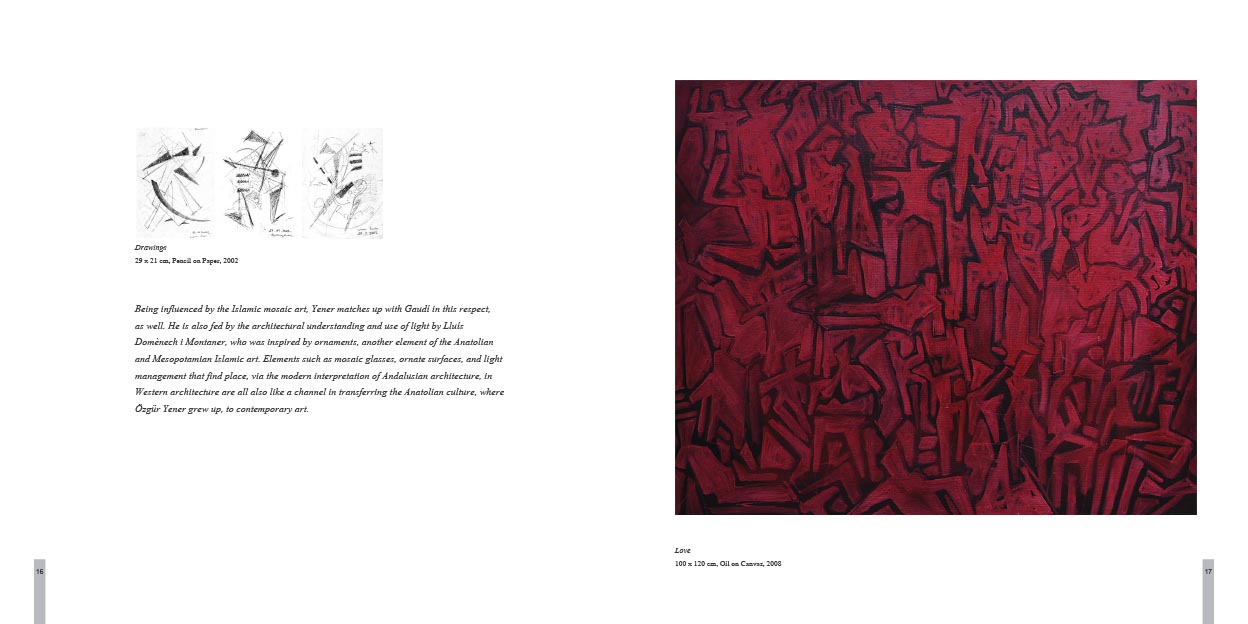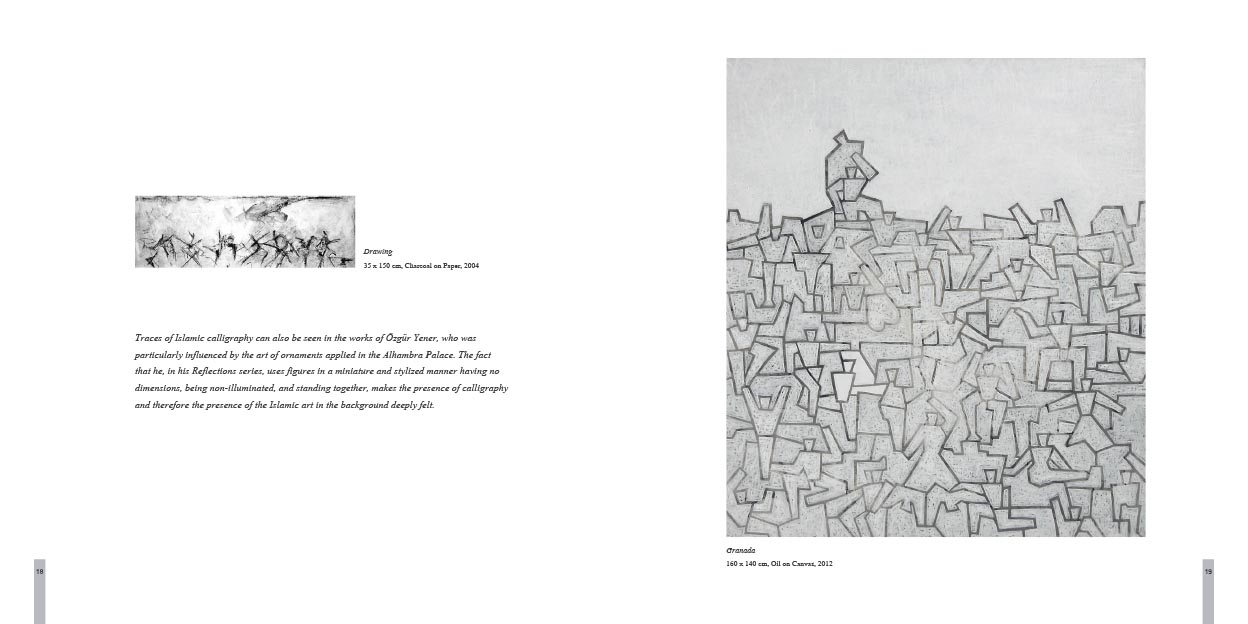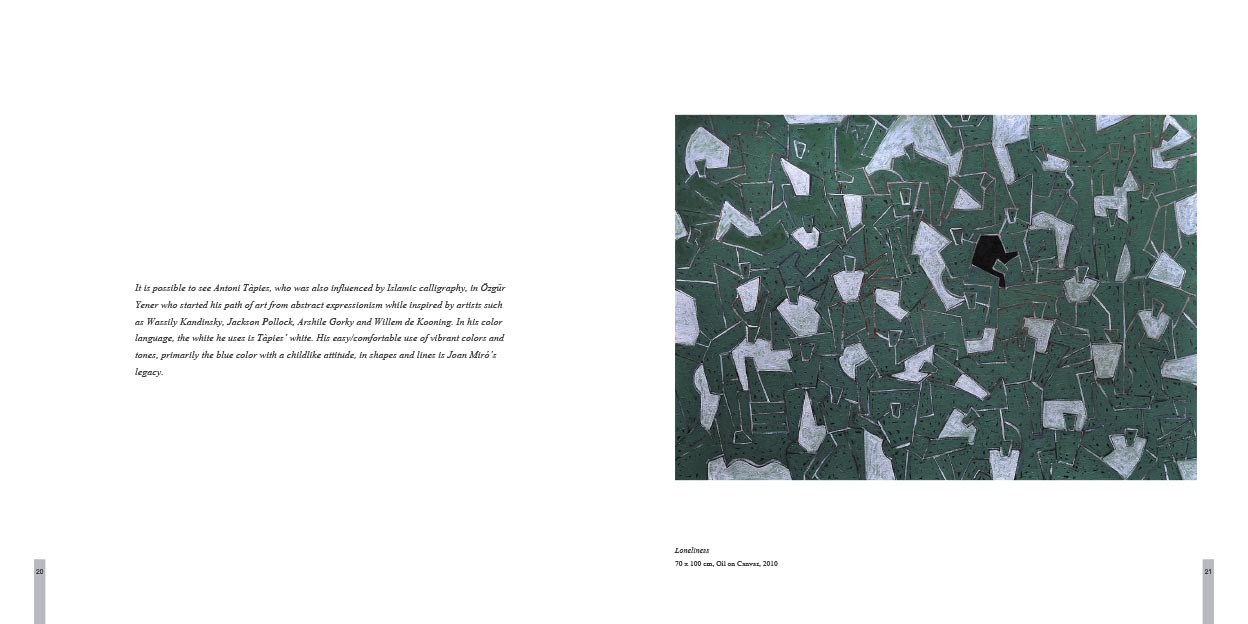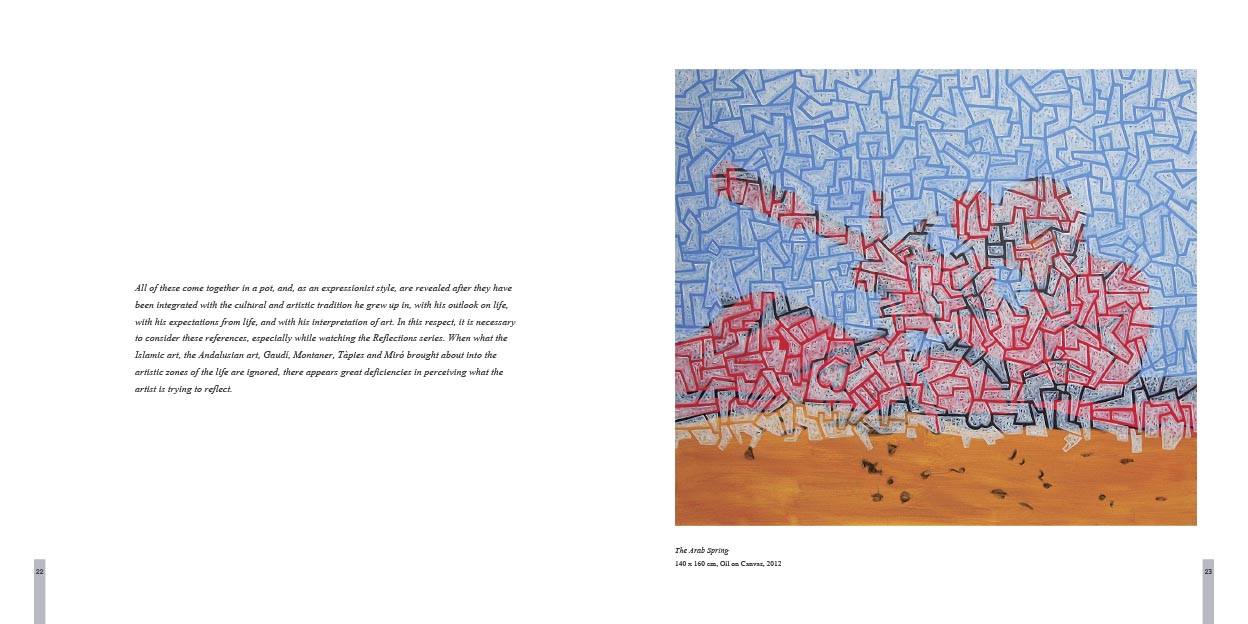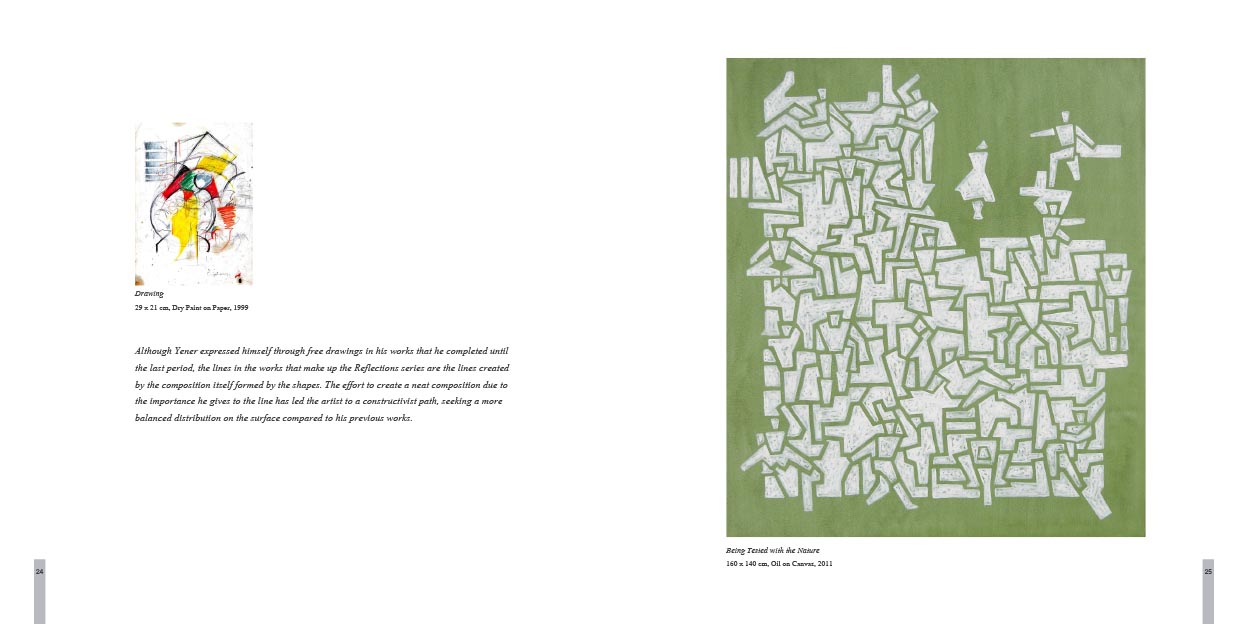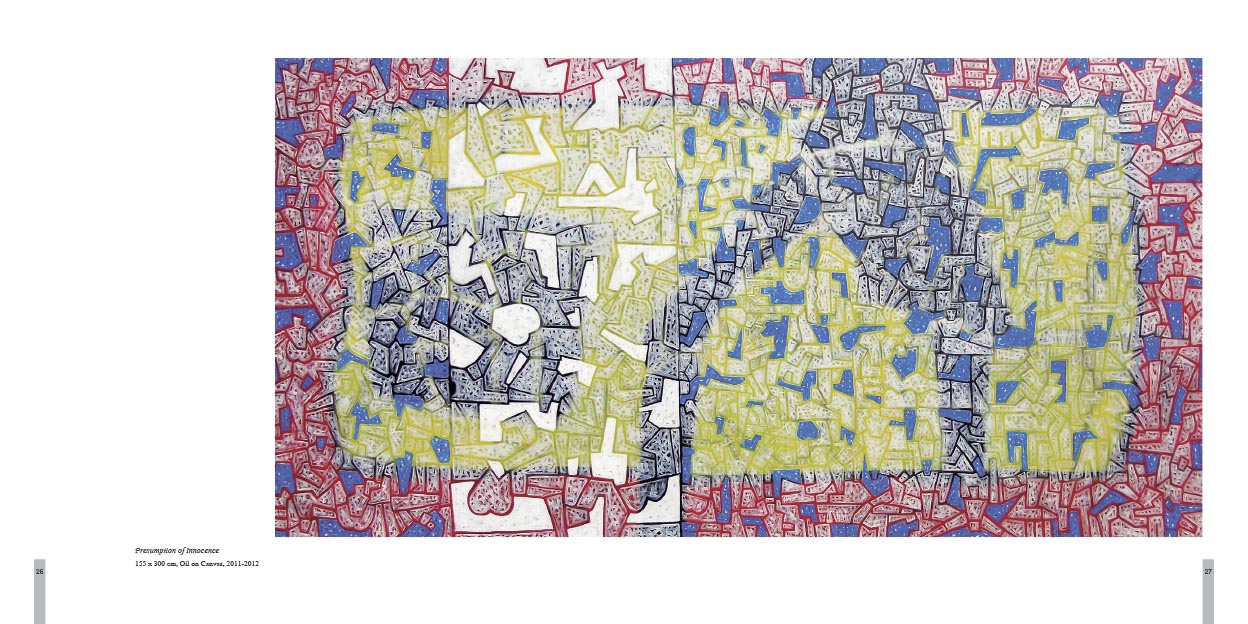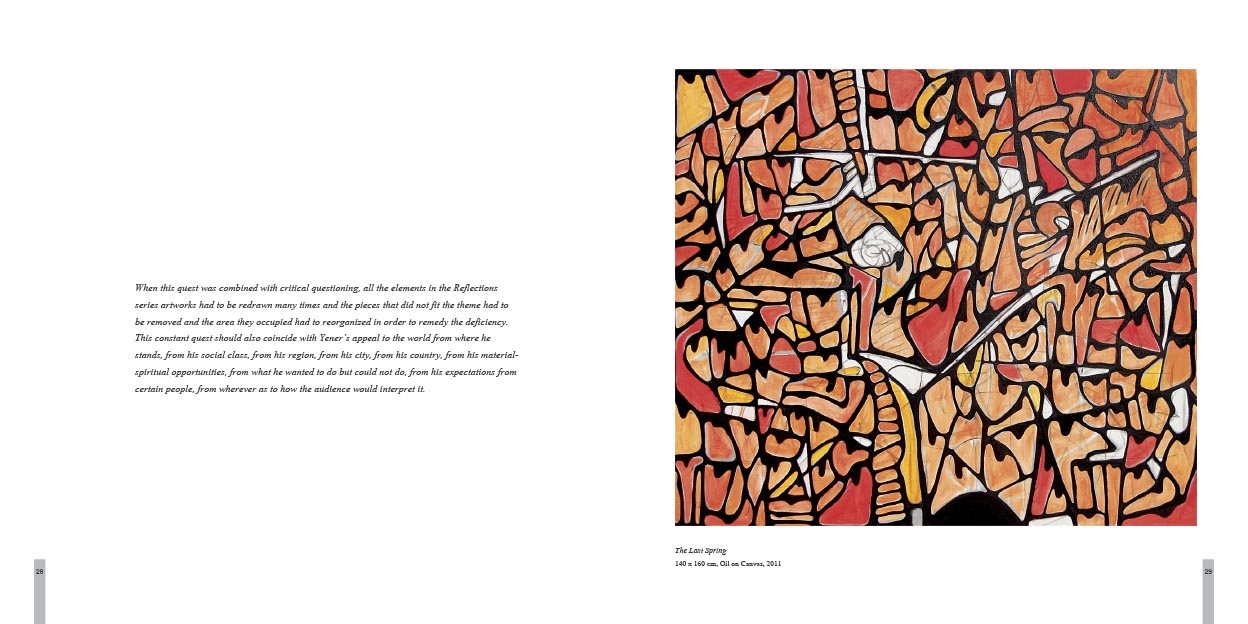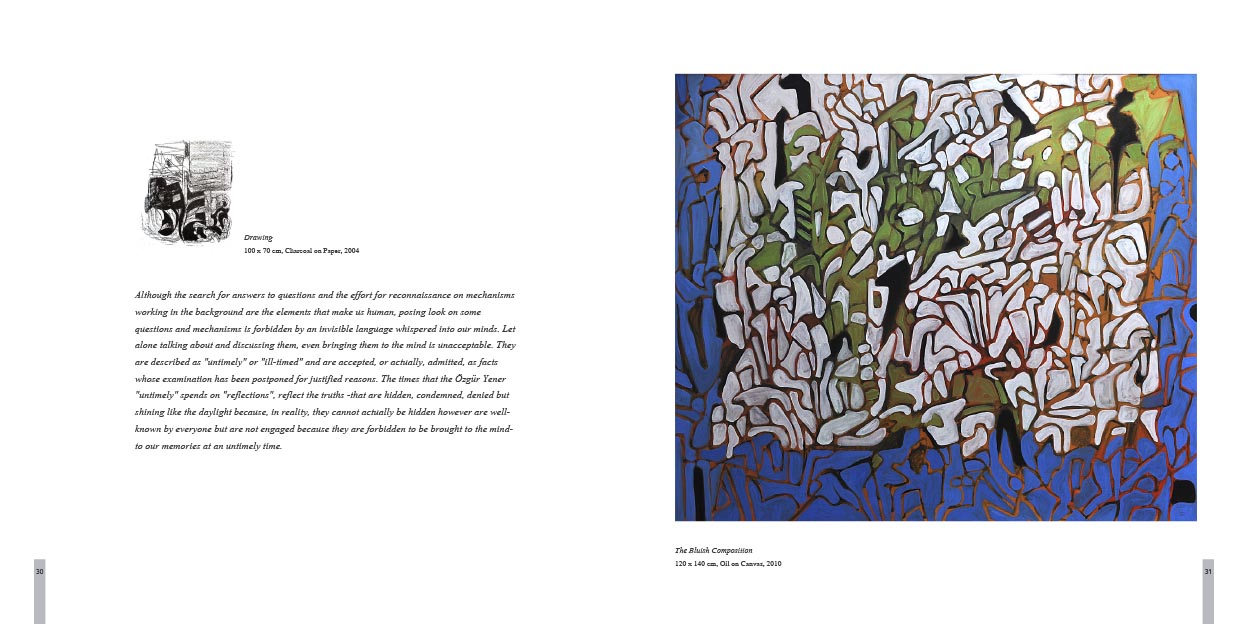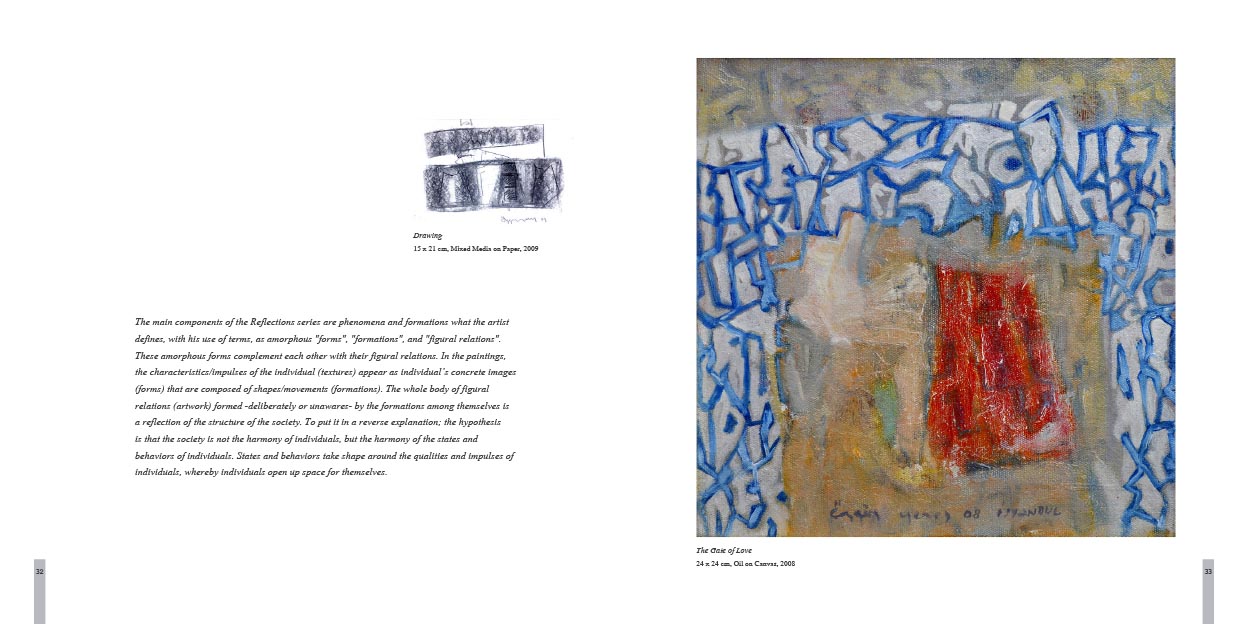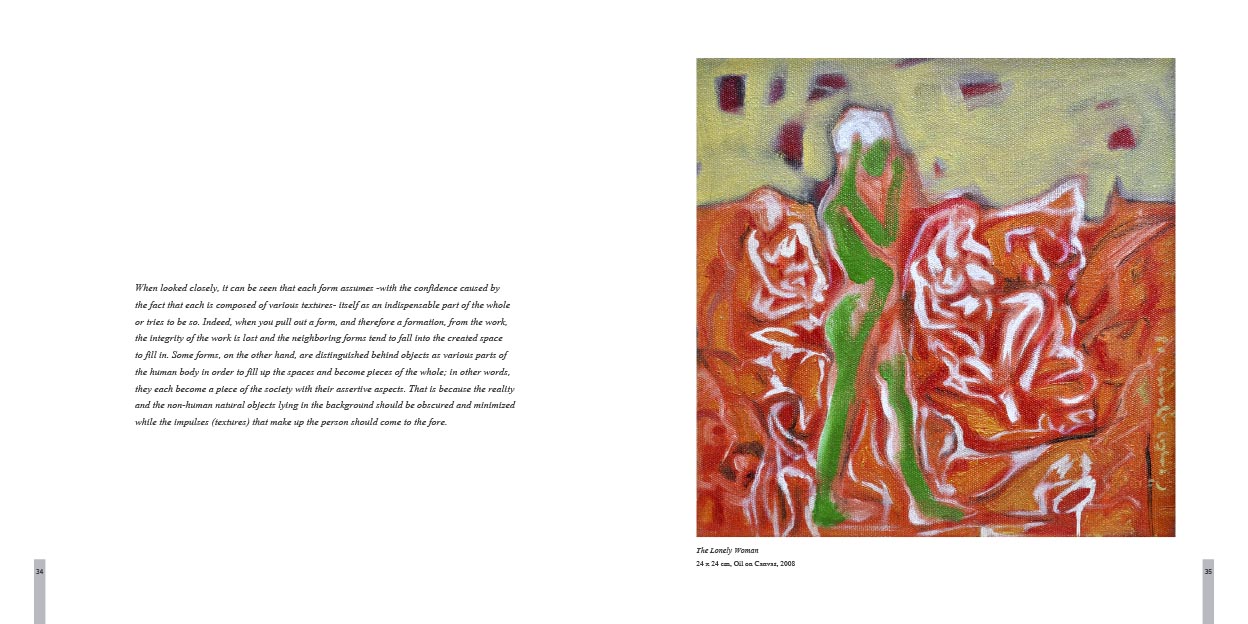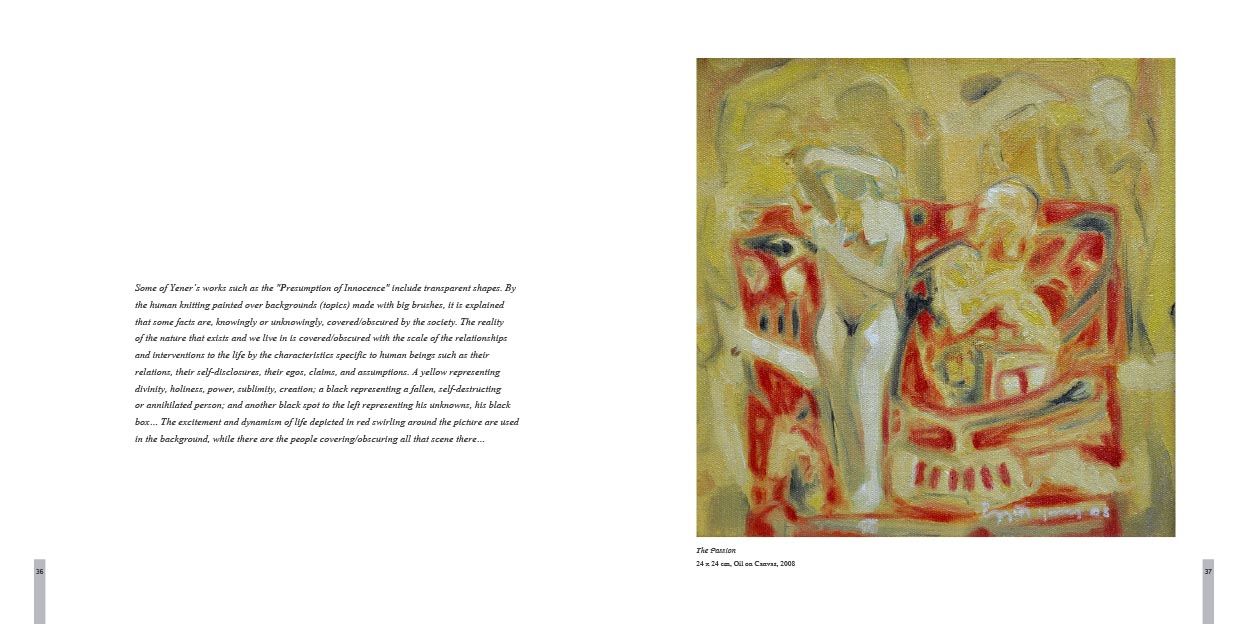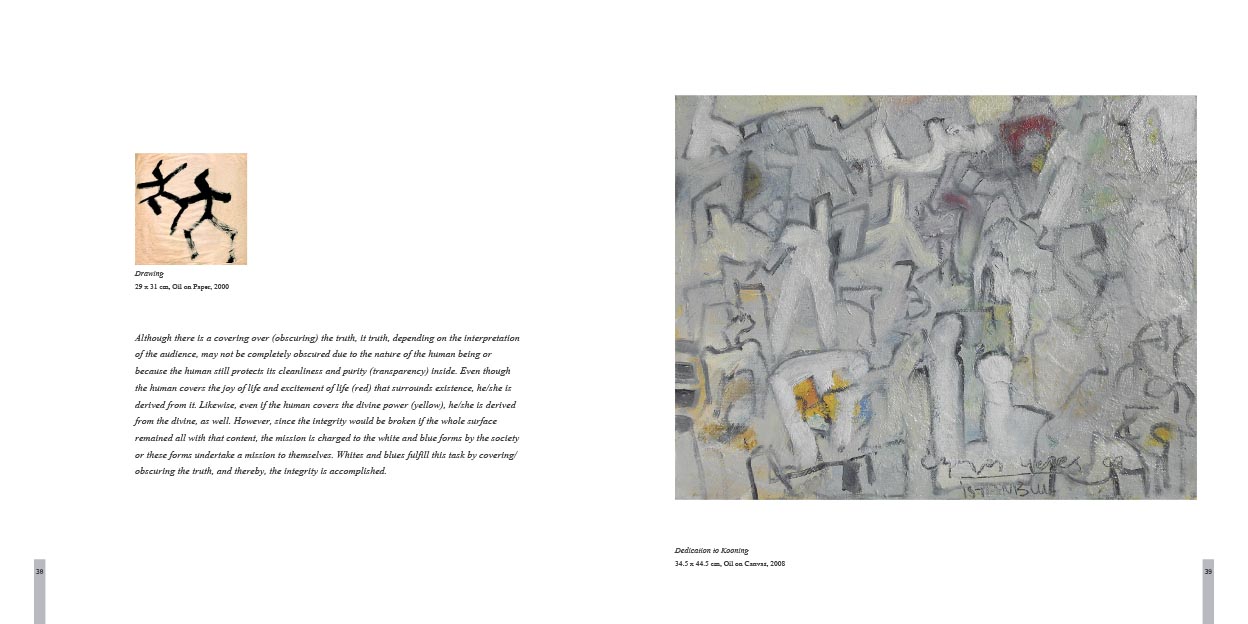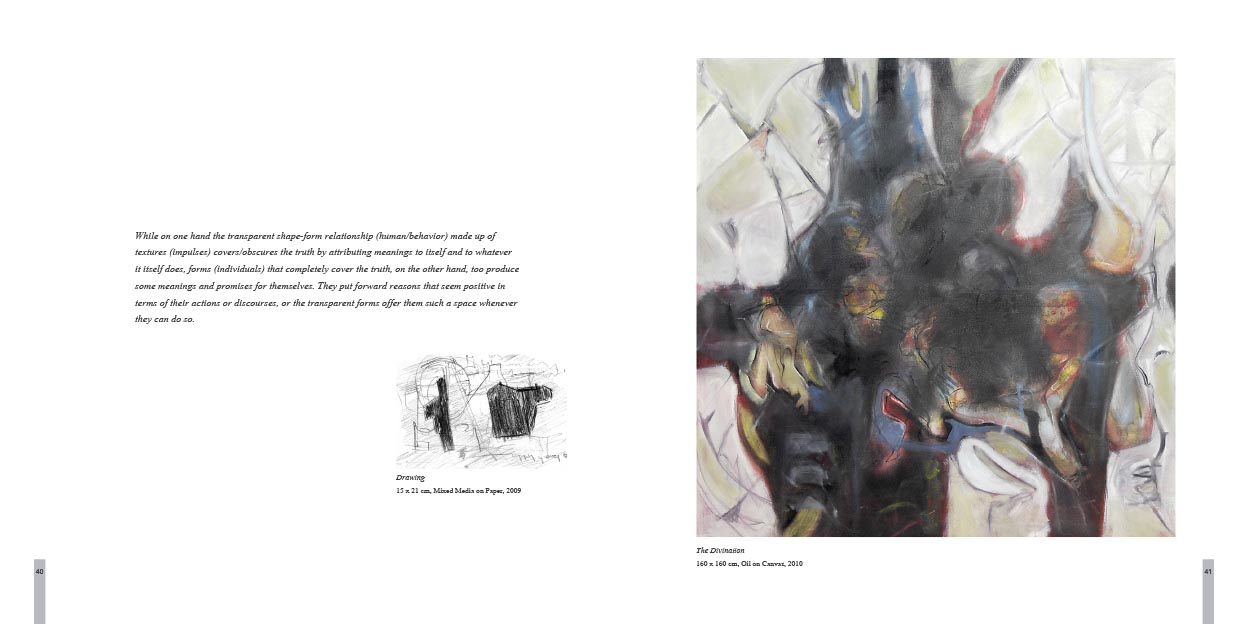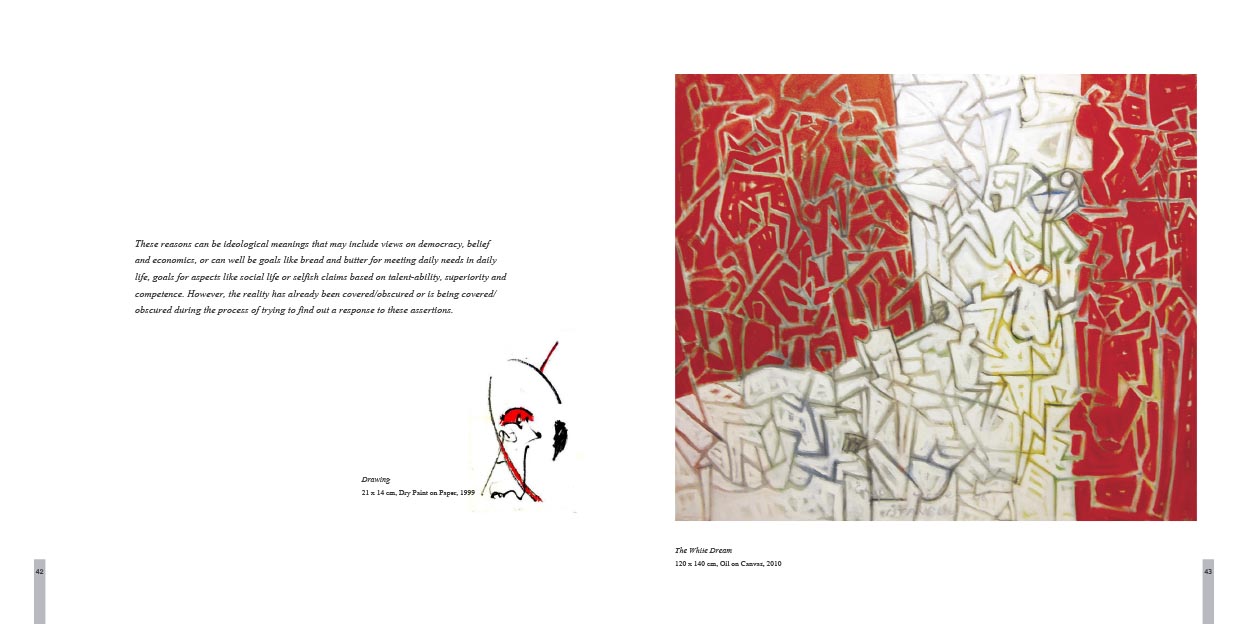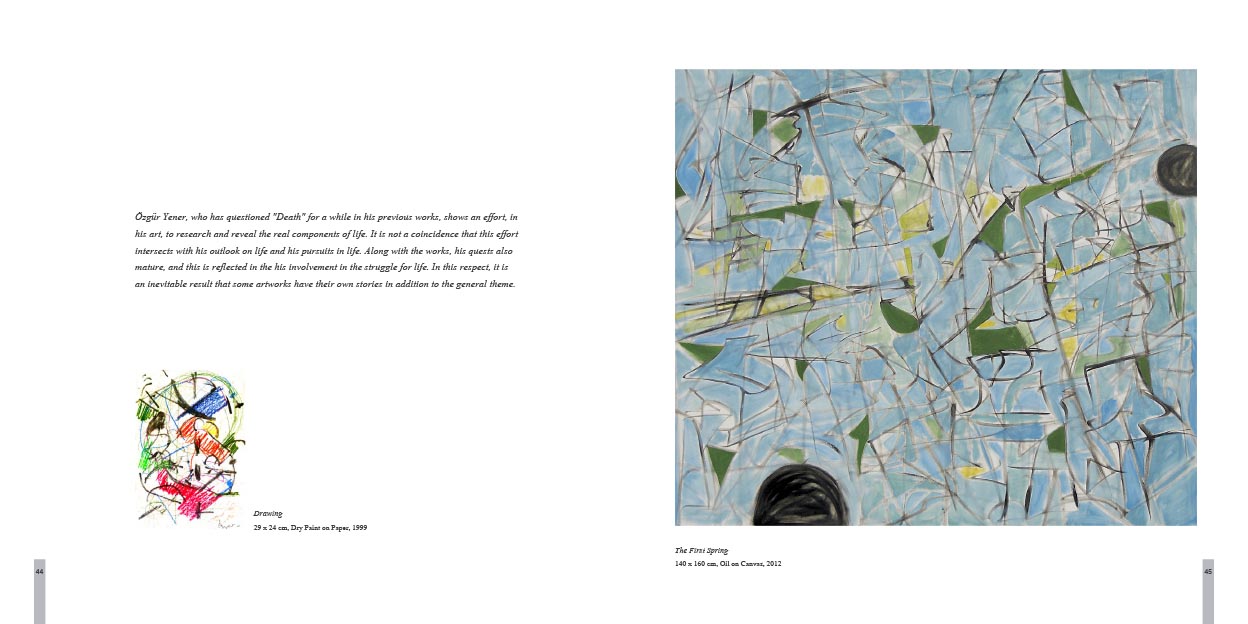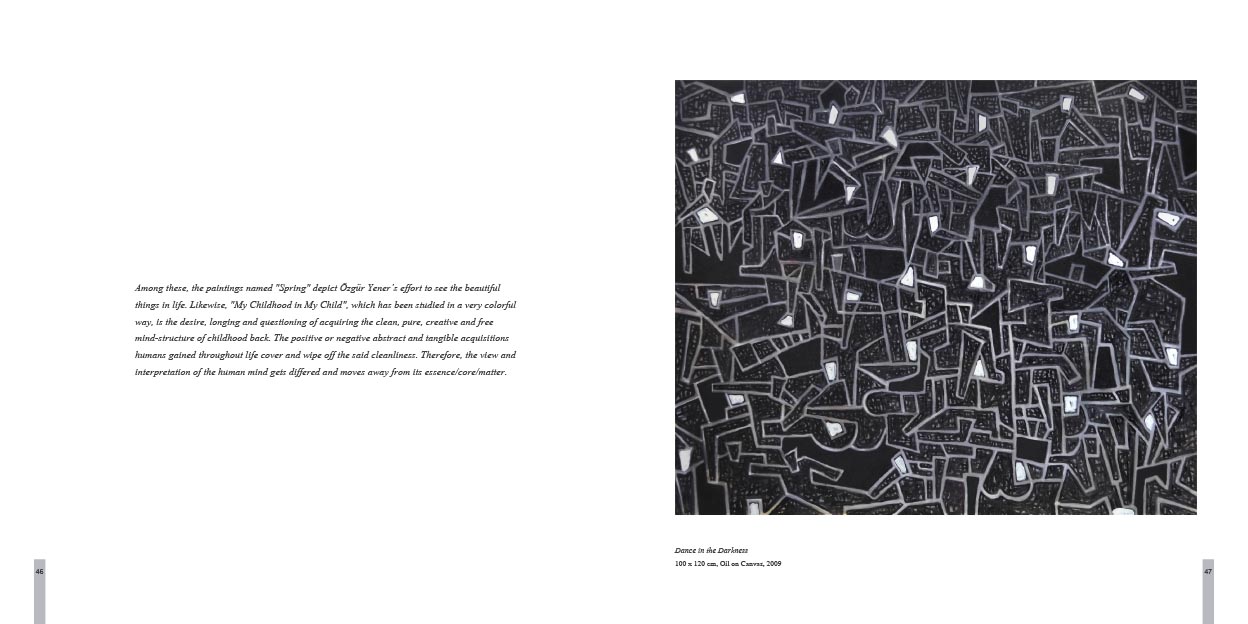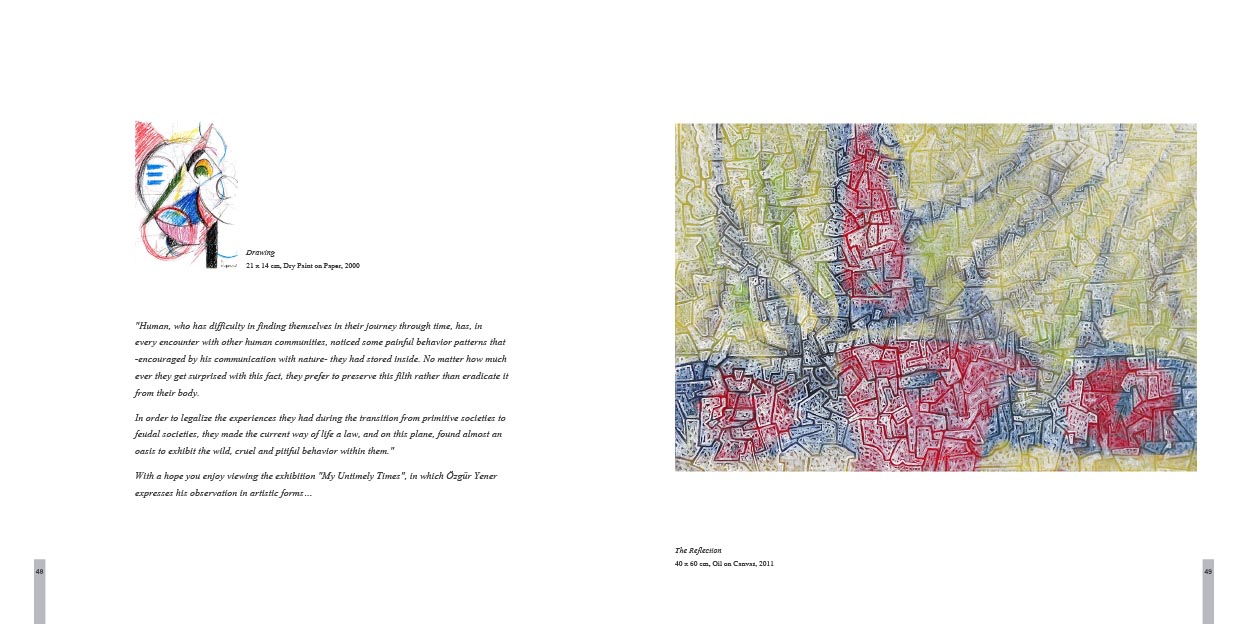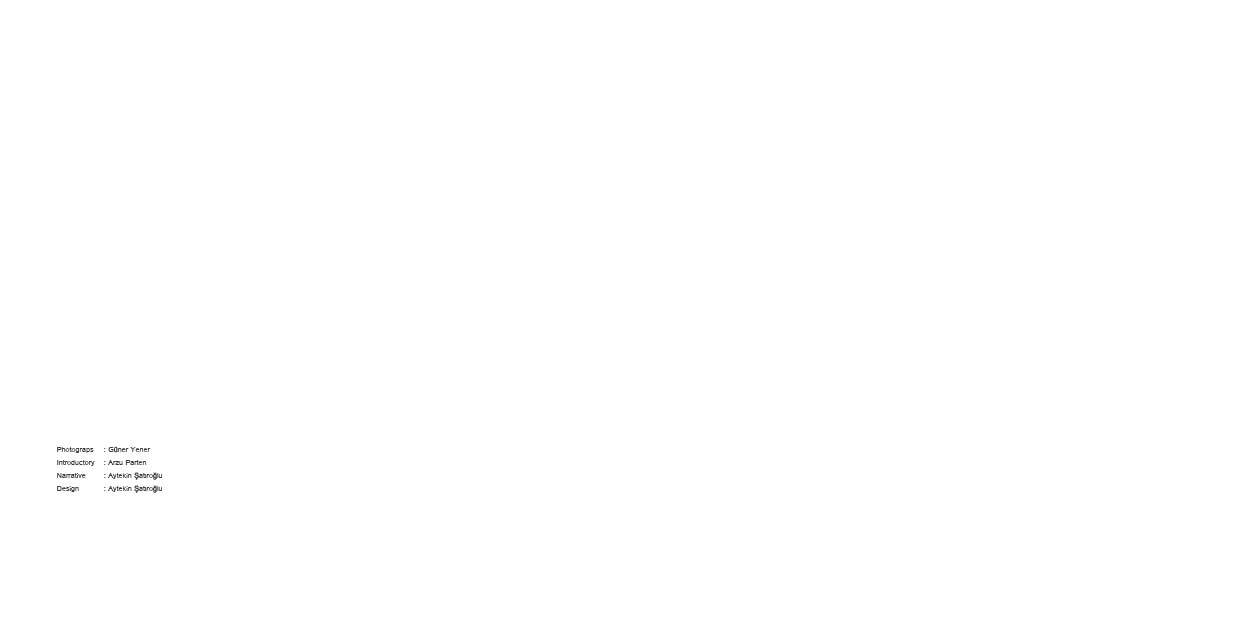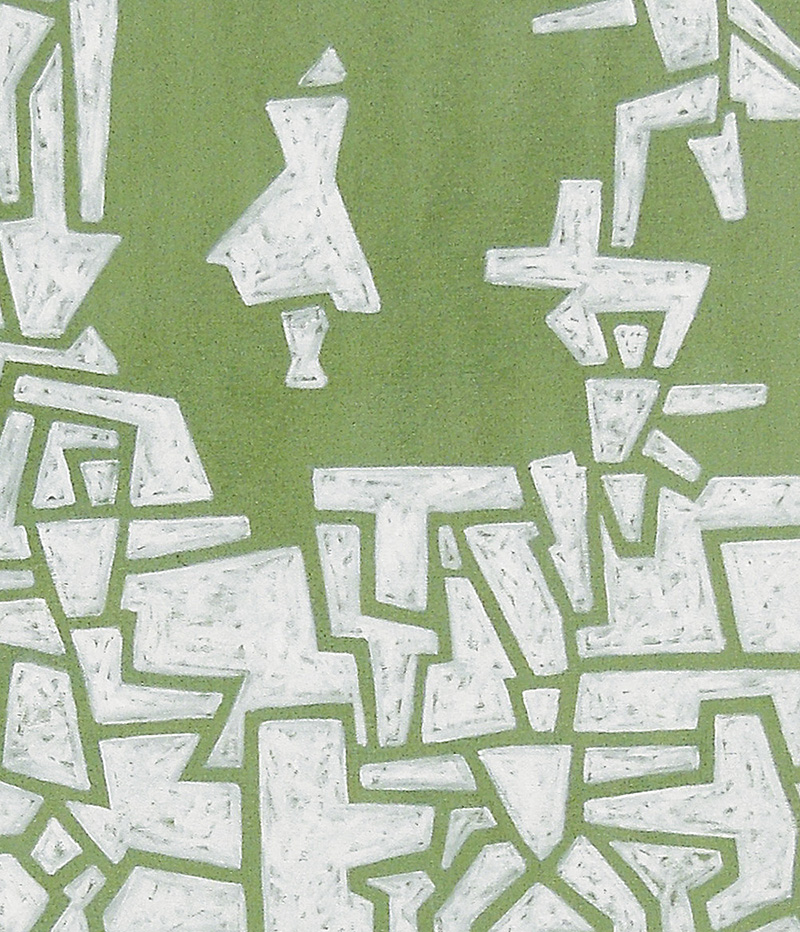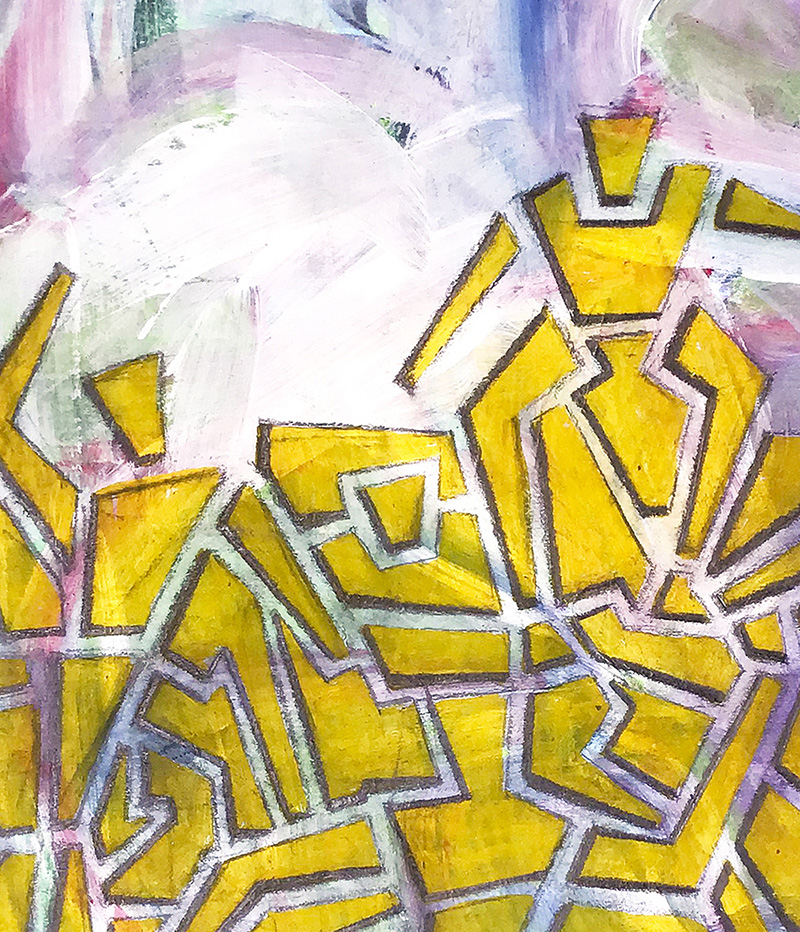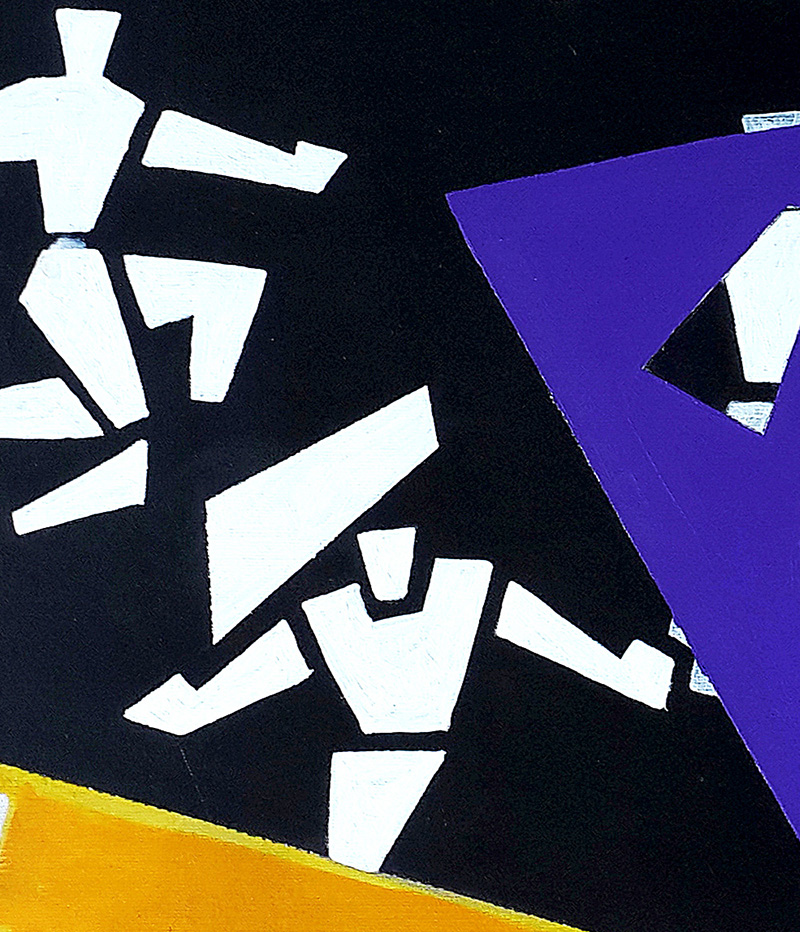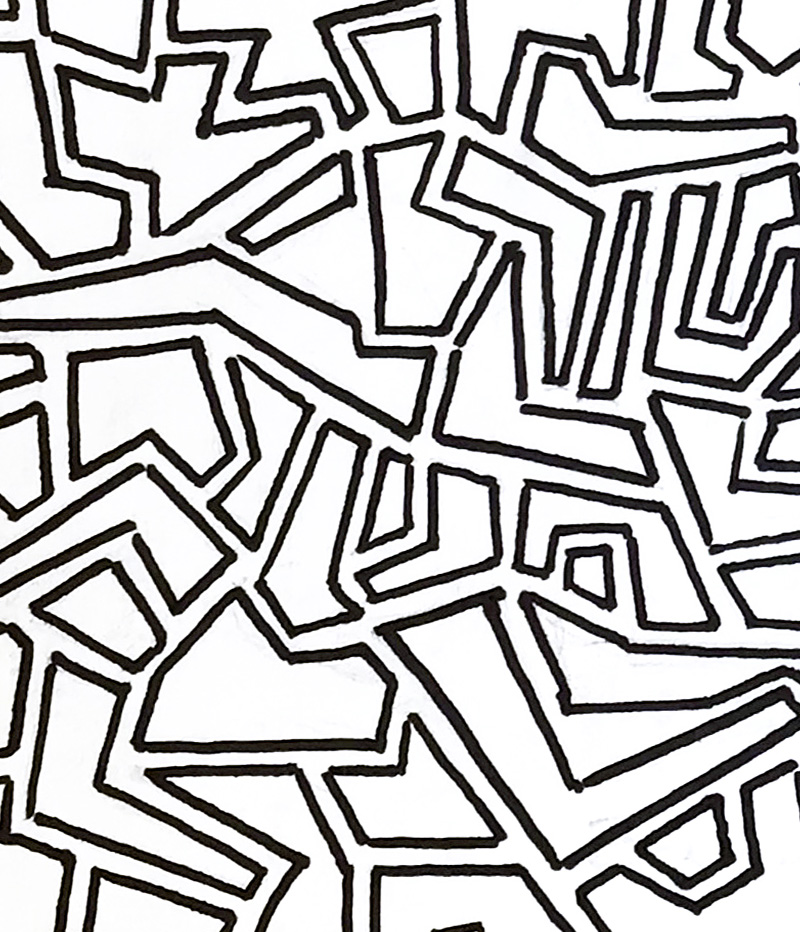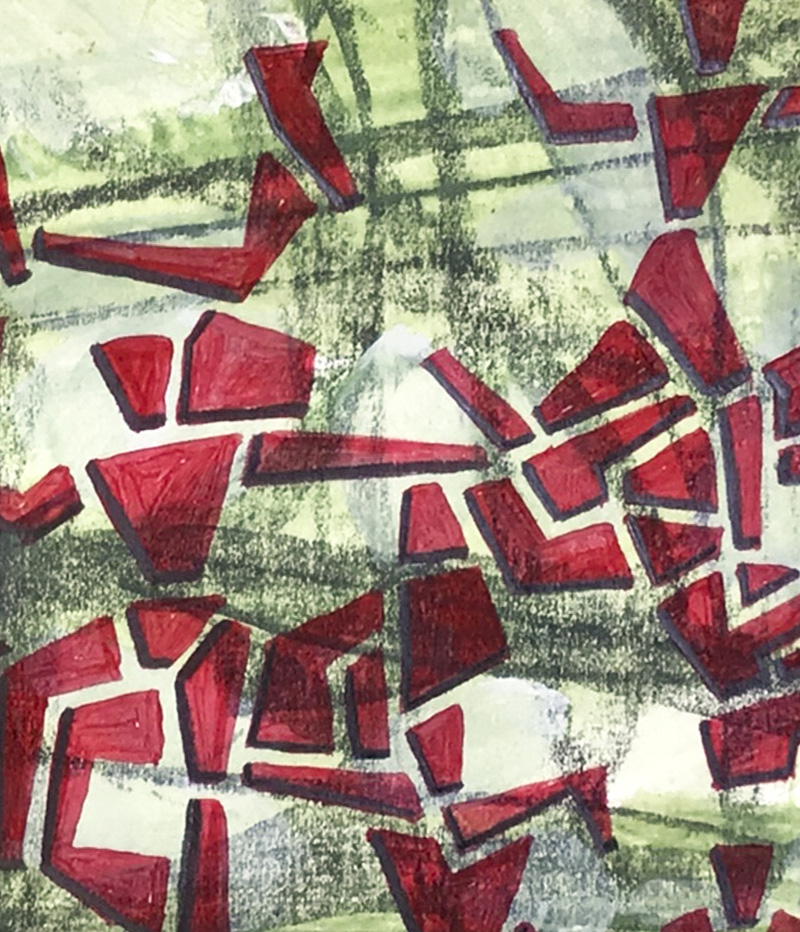

The position of every living thing in the mother's womb is the same. It is introverted as a sign of the need to be protected, fed, and loved. When he leaves her body, he finds and takes his first breath, he straightens up and turns his face to the world.

What a coincidence; every time a person cannot find what they hope for, and in every disruption in the ego satisfaction or in meeting their desires that they are used to, they become introverted again like in the womb of their mother and cuts off his contact with the outside world.
A dervish, who is in search at a level of truth and not of egos, appears before us with an identity like an atlas of thought whose heart and hand is one with every living thing, whose mind and tongue advance through the capillaries of reality. Just like the eye, as descended to the bottoms, sees the plants whose majesty is in their roots, the ice whose body is in the water, and the rocks whose essence lays under the ground but excludes that truth since it is not used to see them, it is witnessed that the dervish is, in fact, inviting to the invisible sides, and, while doing so, live their selective life.
Let's remember the original meaning of the concept of dervish in order to help you question what meanings upon it are imposed today.
According to the generally accepted view, the Persian word dervish was used mainly to describe the needy or beggars. According to another view, the origin of the word is another Persian word meaning "to seek and beg". From the works written in the nineteenth century AD, it is understood that the eminent religious leaders who devoted themselves to spiritual life gave great value to poverty. Indisputably, when the word "dervish" was spoken out, it was understood as a poor person and a person who only hoped from Allah. However, this was never due to their poverty, but to the fact that they either rejected or dissipated their existing world existence. It was also a sublime characterization expressing that they were still in "poor of knowledge" no matter how much he knew.
The awareness that emerged with the emergence of Islamic sects and compilation of hadiths, that the knowledge should be systematically recorded and fixed through written records rather than myths and distributed to Islamic countries is a feature of the octa-hundreds of AD. It would take a few decades to get into more private information and start keeping records about individuals, at least about their ideas, living styles, and basic cornerstones in their lives.
In addition to these works, thanks to poems and geography books, we can get information about the life philosophies of the dervishes who lived in the middle of the eighth century AD. With the spread of the lifestyle developed by the Umayyads to the entire Islamic geography, the increasing number of those who completely quit the world's affairs during a time when sects of people who do not enjoy the said Umayyad lifestyle have started to mobilize. We also know that with the Abbasids taking over the caliphate at the end of the process the ruling groups, naturally, also intervened in the differences of opinion on religious issues and applied various pressures against those who did not think like them.
In the middle of the eighth century, two different tendencies emerged among the thinkers oriented towards spirituality, one being Khorasan-based malamet and the other Iraq-based Sufism. However, this would not change the fundamentals. The word "dervish" continued to be used for people who realized that they were in need of one, Allah alone, regardless of their wealth or poverty. So much so that the children of many wealthy fathers rejected their position and entered this path, while the children of many influential fathers left the magnificence of the center and the luxurious life of the time.
In these early periods, we see dervish examples who helped the poor or worked for them and disappeared at the time to be paid, as well as examples who spent their earnings on needy people sometimes in natural ways, that is, openly, however mostly in hiding, but continued their own poverty.
Whether they were Sufis or Melamis, those who looked different from the public but pretended to be dervishes were not accepted by religious thinkers.
Although the form can be explained in this way, it can, without going into the details of dozens of definitions and explanations, be said that the philosophy of being a dervish is essentially a search to find the truth by getting away from worldly affairs, which are endless and even go so far as to often cause injustice.
It is a state of being alone merely with their own inner world and thoughts whereby the individual can accomplish a deep understanding of every word spoken in a quest to formulate the big picture and of realizing how weak the human being is under the magnificence of nature.
It is a level of motivation to stand thereby for "dert" (trouble) and "çile" (suffer), and wriggling out of every detail that is part of the world whereby the individual gets alone with their inner world, thoughts, and spoken words again and again but deeper and deeper.
Having met their human needs in a boxy room, it is a state of taking the roads, keeping on a continuous dialog and exchange of ideas with their fellows who live their lives on the same patterns, in other words, chasing the truth. It is however not keeping what has been discovered and learned to themselves but spreading it as far as possible, and transporting the information acquired there back to where they live.
Being a dervish is not to tremble when presenting what you own, what you have in your hand, or your earnings to poor people. It is while feeding them, a state of being unable to find a bite to eat and a state of having to travel distances without horses or camels.
The only reason why such a lifestyle finds its ground in such wide geography cannot be just the urge to torture oneself, the desire to be a thinker or the awareness that the truth can be found by pulling out of the world. For a time and reason not recorded; a group of people who prioritized spirituality and belief in the only "deity" in the true sense, embraced this concept (i.e., poverty), which was used to characterize the masses pushed into the shadow of material wealth, splendor, and worldly affairs, and reached hearts by separating themselves from those worldly things.
Some dervishes stayed where they lived, and served there, others traveled from land to land, lived and got to know the people there, listened to the religious scholars there, brought back what they had learned, and then carried it to their new destinations. In this way, Islamic geography was connected to each other by a bond of the heart.
Of course, to understand a time is to understand the conditions of that time. Today, different things are understood when the terms and lives from the past are mentioned, and unfortunately, it will continue to be so in the future unless human beings learn to listen and understand each other.
The background of my painting, which I named "Dervish", is my thoughts on the sociology and human psychology of the pre-tenth century, which is a symbol of turbulent time periods for us. Facts such as how open and sharing a person can be, how he can take a peaceful protest attitude against facts and developments that contradict his beliefs, how he can also enrich a basic knowledge and leave a sign for the good for the future through all these, and devote himself and his whole existence to this path were the historical elements that attracted and impressed me the most.
Man's illustrations and images are the same regardless of time, including modern man. What is different is the change in meanings of their naming over time for various reasons. However, every individual who defines himself as a modern person, whether in the past, today, or in the future, should be aware of this phenomenon and make an effort to raise awareness of this phenomenon. Accordingly, in this artwork, I tried to describe various aspects of a dervish in its original sense, in an unbiased manner.
It is possible to see various dervish forms and depictions limned on my later paintings where I questioned societies.
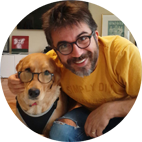



























 In my works that I exhibited in my "My Timeless (Ill-Timed) Times" exhibition in 2012 with the term "reflections", I symbolized the integrity/indivisibility of the society, and basically expressed three phenomena: the ego impulses, the human embodiments driven by the ego impulses, and the obscurity and the consumption of the pure reality and of the nature by the human embodiments. The arithmetic balance enjoyed on canvases depends on the existence of all of the human embodiments.
In my works that I exhibited in my "My Timeless (Ill-Timed) Times" exhibition in 2012 with the term "reflections", I symbolized the integrity/indivisibility of the society, and basically expressed three phenomena: the ego impulses, the human embodiments driven by the ego impulses, and the obscurity and the consumption of the pure reality and of the nature by the human embodiments. The arithmetic balance enjoyed on canvases depends on the existence of all of the human embodiments. The impulses (drives) that generate for the reason of being alive dismantle space and time. This disintegration caused by the interactions among the impulses turns the existence to understandable and makes the human an entity that questionize themselves. I contribute to the said questioning with the network theory that I have formulated on my own observations. On my thesis of "contingency and affectivity" (state of being adjacent and influencing), I express that the human, ironically, despite their said quizziness, legalizes a structure formed just by egos and, thereby, stretches and destroys the "array".
The impulses (drives) that generate for the reason of being alive dismantle space and time. This disintegration caused by the interactions among the impulses turns the existence to understandable and makes the human an entity that questionize themselves. I contribute to the said questioning with the network theory that I have formulated on my own observations. On my thesis of "contingency and affectivity" (state of being adjacent and influencing), I express that the human, ironically, despite their said quizziness, legalizes a structure formed just by egos and, thereby, stretches and destroys the "array". In a context where the word "array" can be translated into the daily language as a sequential table containing items that improve and assist one another, each element of the "array" –that is, the individuals- do, because they are just the elements of the array, own unique missions. However, actions required by those missions need specific amounts of radii. The radii cause individuals to depart from each other whereby what we call the society is formed.
In a context where the word "array" can be translated into the daily language as a sequential table containing items that improve and assist one another, each element of the "array" –that is, the individuals- do, because they are just the elements of the array, own unique missions. However, actions required by those missions need specific amounts of radii. The radii cause individuals to depart from each other whereby what we call the society is formed. As one can see, certain organs that belong to some groups of individuals of the array who tender crowdedness and turbulence are in extreme hustle setting up individuals' egotism at excessive levels. Some organs of some individuals, however, are dull, cannot find a room, or are wiped out, run over by an organ of a more dominant individual. Attempting to add required room in order to eliminate this situation may extinguish the balance, the society, because, with the existing state, individuals have built up a dynamic "network" among themselves and can perform their role with the help of others. This compulsory asymmetric contingency and affectivity, as a result, obscures and consumes the pure reality and the reality of nature.
As one can see, certain organs that belong to some groups of individuals of the array who tender crowdedness and turbulence are in extreme hustle setting up individuals' egotism at excessive levels. Some organs of some individuals, however, are dull, cannot find a room, or are wiped out, run over by an organ of a more dominant individual. Attempting to add required room in order to eliminate this situation may extinguish the balance, the society, because, with the existing state, individuals have built up a dynamic "network" among themselves and can perform their role with the help of others. This compulsory asymmetric contingency and affectivity, as a result, obscures and consumes the pure reality and the reality of nature. The creation of the artworks contains a search for geometricizing the social pressures and rudeness. As a consequence of the search, arithmetic bursts as edges of the objects are applications that I have dared after calculations and try-outs in a manner not ever done before. While I paint the society-individual formation I observe in a constructive perception and in a conventional attitude, I apply the white color, which is not acknowledged as a color at all, in a wild manner. Thereby, my artworks within the concept of my thesis convey how much at a reverse position of the general opinion I have arrived.
The creation of the artworks contains a search for geometricizing the social pressures and rudeness. As a consequence of the search, arithmetic bursts as edges of the objects are applications that I have dared after calculations and try-outs in a manner not ever done before. While I paint the society-individual formation I observe in a constructive perception and in a conventional attitude, I apply the white color, which is not acknowledged as a color at all, in a wild manner. Thereby, my artworks within the concept of my thesis convey how much at a reverse position of the general opinion I have arrived.